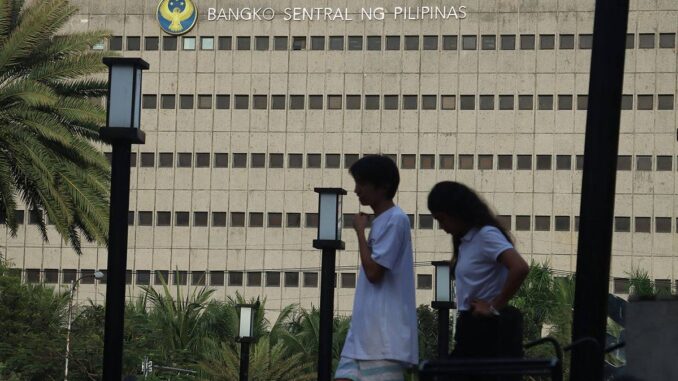
THE minimum liquidity ratio for thrift banks will be maintained, the Bangko Sentral ng Pilipinas (BSP) said, amid calls from the sector for an easing.
“The BSP recognizes the thrift banking industry’s valuable contribution to the country’s economic growth through its lending activities,” the central bank said in a statement on Wednesday.
“Nonetheless, the BSP views that maintaining the minimum liquidity ratio (MLR) of 20.0 percent is appropriate … [as] this ensures that covered banks have adequate liquid assets to withstand potential stress events while continuing to meet their clients’ funding needs,” it added.
The minimum liquidity ratio for stand-alone thrift lenders, lowered from 20 percent to 16 percent in 2020 as a pandemic relief measure, has been raised back to 20 percent.
Chamber of Thrift Banks President Cecilio San Pedro has urged the central bank to relax the requirement back to 16 percent level, saying that this would release more funds for lending and boost economic growth.
The central bank, however, said that the MLR has consistently remained well above the minimum requirement, asserting that it is unnecessary to lower the ratio further.
As of May 2024, the industry had more than P35 billion in extra loanable funds, and most banks report liquidity ratios well above 20 percent.
“This demonstrates that the thrift banking industry remains capable of complying with the prudential liquidity requirement while continuing to expand lending,” the BSP said.
The central bank clarified that the MLR was not an extra reserve requirement for thrift banks, but a separate measure to ensure short-term liquidity resilience.
The MLR focuses on short-term stability while reserve requirements manage domestic liquidity, the BSP said.
Bank reserves also count as liquid assets so these requirements do not add up, it added,
“The BSP continues to monitor banks’ compliance with liquidity requirements and will react promptly to any developments that may impede compliance on an industry-wide basis,” the central bank said.


Be the first to comment